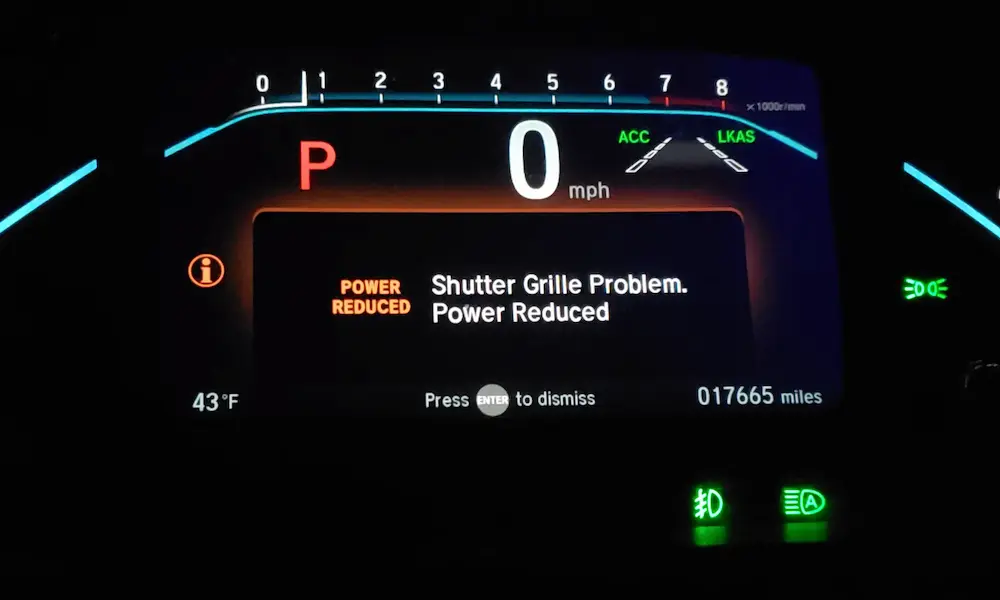If you’ve noticed your Honda CR-V has trouble shifting gears or feels shaky, you’re not alone. Many CR-V owners experience transmission problems, like vibrations and shifting issues. These common issues can disrupt your driving experience. Reading further will help you understand these problems better and find ways to address them before they become costly repairs.
Common Honda CR-V Transmission Issues
If you’re driving a Honda CR-V, it’s important to be aware of potential transmission issues. Knowing the symptoms and causes can help you address problems faster. Transmission failure symptoms, oil dilution effects, electrical issues, and the importance of software updates are key factors to consider.
Transmission Failure Symptoms
Transmission failure in the Honda CR-V can show itself in different ways. These symptoms include difficulty shifting gears, unusual noises, or slipping gears. If you notice your CR-V struggling to switch between gears smoothly, it might indicate an issue that needs attention. Strange sounds like whining or clunking can also be signs of trouble. Slipping gears, where the transmission unexpectedly shifts, is another symptom you shouldn’t ignore. Regular maintenance and checking transmission fluid levels can help prevent serious problems.
Impact of Oil Dilution on Transmission
Oil dilution can affect the performance of your transmission. This issue occurs when fuel mixes with engine oil, reducing lubrication and increasing wear on parts. Over time, oil dilution can lead to increased friction and heat, potentially damaging the transmission system. It’s common in some Honda CR-V models, especially in colder climates where engines take longer to warm up. Regular oil changes and using the correct oil type can help mitigate these effects and keep your transmission running smoothly.
Electrical Problems Affecting Transmission
Electrical issues can have a big impact on how your transmission operates. Problems in the CR-V’s electrical system, like faulty solenoids or sensors, can disrupt the communication between the car’s computer and the transmission. This may cause shifting problems or unexpected gear changes. If you experience erratic transmission behavior, it might be due to electrical malfunctions. Having a professional diagnose the issue can help you identify and fix the root cause effectively.
Software Updates for Improved Functionality
Keeping your vehicle’s software updated is crucial for optimal transmission performance. Honda releases software updates that address known issues, enhance functionality, and improve fuel efficiency. These updates can fix bugs that affect how the transmission shifts or responds to driving conditions. Staying informed about available updates and consulting your dealer for installation can help maintain your CR-V’s transmission health and overall driving experience.
Troubleshooting Tips
When dealing with Honda CR-V transmission problems, paying attention to the check engine light and fluid levels can help you identify and resolve issues before they become serious. Here are some tips to guide you through these processes.
Diagnosing the Check Engine Light
If your check engine light comes on, it’s essential to check it promptly. This light can indicate transmission troubles. You might notice your CR-V hesitating or shifting gears poorly.
Use an OBD-II scanner to read the error code. You can purchase a scanner or visit an auto parts store for a free check. Once you have the code, search for its meaning online for potential solutions.
Sometimes, the light may signal problems like faulty sensors or transmission component issues, requiring expert attention. Remember, ignoring the check engine light can lead to more severe transmission damage.
Addressing Low Fluid Levels
Checking for low transmission fluid is easy and crucial for keeping your CR-V running smoothly. Park on a level surface, turn on the engine, and let it warm up. Then, shift through all gears to circulate the fluid.
Locate the dipstick; it might be near the firewall. Pull it out and wipe it clean. Reinsert it, then pull it out again to check the fluid level.
If it’s low, add the recommended type of fluid. Look for leaks under your car, which may present as reddish-brown puddles. Leaking fluid problems often signal transmission trouble, emphasizing the importance of maintaining proper fluid levels. Keeping your transmission fluid at the right level extends its lifespan and helps avoid costly repairs.
Preventive Maintenance and Care
Taking care of your Honda CR-V’s transmission can save you time and money in the long run. Regular checks and maintenance play a key role in keeping your car running smoothly. Here’s how you can ensure the longevity of your transmission.
Regular Transmission Fluid Checks
Checking the transmission fluid regularly in your CR-V is essential. This fluid acts as a lubricant and helps keep the transmission’s various parts working smoothly. You should start by parking your vehicle on a level surface and using the dipstick to check the fluid level. Low fluid can lead to major transmission issues, so it’s important to keep it topped up.
The color and smell of the transmission fluid can also indicate its condition. It should be a bright, clear red and free of a burnt smell. If you notice any problems, consider replacing the fluid to prevent further damage. Regular checks can prevent issues like transmission slipping, saving you from costly repairs down the road.
Following Manufacturer’s Service Schedule
Staying on top of the manufacturer’s service schedule for your CR-V is a must. Honda provides specific guidelines on when to service the transmission based on factors like mileage. These regular check-ups help in identifying potential problems early before they escalate into larger issues.
The service schedule will usually include tasks like changing the transmission fluid and inspecting for wear and tear. Keeping up with these recommended intervals not only ensures your transmission runs smoothly but also extends its lifespan significantly. Consistency in following these guidelines helps maintain the overall performance and efficiency of your transmission, letting you enjoy a smoother ride with less hassle.
Model-Specific Concerns
Understanding which Honda CR-V models have had more transmission issues can be crucial when purchasing a used vehicle. Learning about these common problems will help you make informed decisions and potentially avoid costly repairs.
Honda CR-V Years and Generations to Avoid
Certain model years of the Honda CR-V have been reported to have more transmission problems than others. Owners of the 2007-2010 CR-V, for example, have frequently reported issues related to the transmission. According to a recall in this period, excessive corrosion of the shift cable linkage made it hard to put the car into park.
These years are marked by recurring difficulties with shifting and leaks. While not pervasive in every vehicle, such concerns are significant enough that if you are considering buying a CR-V from this time frame, you may want to proceed with caution. Checking the specific transmission history can save you potential headaches later.
Recognizing Patterns in Transmission Problems Across Generations
Some issues occur more predictably in specific generations of the Honda CR-V. For example, the 2016 model has reports of vibrating at the front end while driving or idling. This can be quite noticeable and may affect passenger comfort.
Recognizing these patterns can be essential, especially if you’re planning on long road trips or regular commutes. Generations featuring a Continually Variable Transmission (CVT) generally perform better in fuel efficiency but have noted different types of maintenance concerns compared to older models. Knowing these details will empower you to choose a reliable CR-V that fits your needs comfortably.














